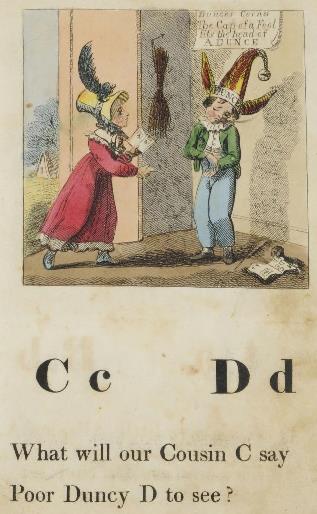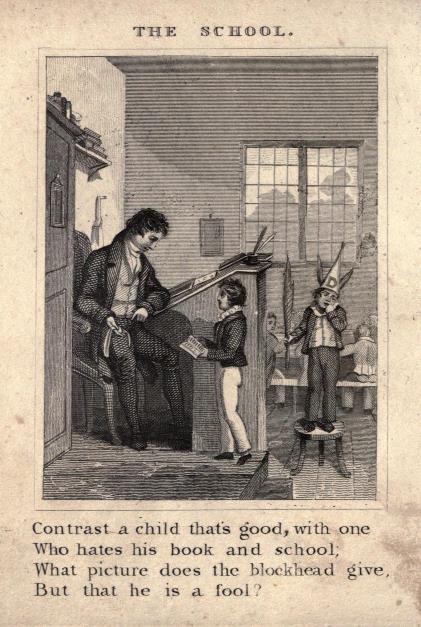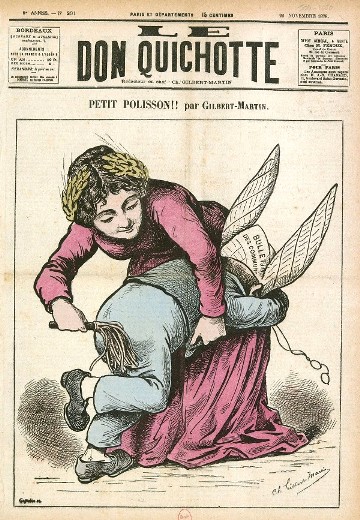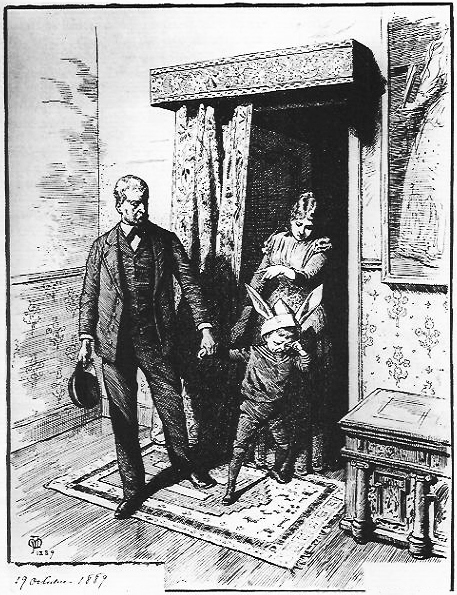| The Public Paperfolding History Project
Last updated 27/11/2025 x |
|||||||
| Donkey-Eared Paper Hats | |||||||
| This
page is being used to collect information about the
history of Donkey-Eared Paper Hats, which were a form of
Dunce's Hat. Please contact me if you know any of this
information is incorrect or if you have any other
information that should be added. Thank you. Dunce's Hats were used as a means of socially shaming children into behaving in the way that a parent of schoolteacher desired. They were often simple conical hats made of either cloth or paper / card and often decorated with the word 'Dunce' or simply 'D'. The origin of the word 'dunce' is unknown. There are several competing theories, none of which is supported by sufficient evidence to compel acceptance. Sometimes Dunce's hats were enhanced by the addition of a pair of donkey-ears. ********** 1820 The image below is a page from the Alphabet Book 'Nursery Novelties for Little Masters and Mistresses' published by Harris and Son in London in 1820. The wording at top right reads 'Dunces Corner' and 'The Cap of a Fool fits the head of a DUNCE'. Note that the hat is also decorated with the word 'DUNCE'. This image makes a clear connection between Fool's (or Jester's) Caps and Dunce Hats. This hat is clearly made of cloth.
********** 1828 This image showing a conical Dunce's Hat equipped with donkey ears is from Volume 1 of 'The Affectionate Children's Gift and the Good Child's Reward' by Henry Sharpe Horsley, which was published in London in 1828. The picture was included to illustrate a poem called 'The School' which included the stanza given below. It is not clear what materials this particular hat was made from.
********** 1878 The front cover of Le Don Quichotte of 22nd November 1878 shows a child wearing a donkey-eared paper hat.
********** 1889 This engraving from 1889 by the Spanish cartoonist Apeles Mestres (1854 to 1936), which was published in 'El liberalismo es pecado, edicion poliglota' in 1891, shows a boy wearing a donkey ear Dunce's Hat. (Information from Juan Gimeno.) It appears to be a basic Newspaper Hat to which ears have been added by tucking them down into the brim. The ears are also presumably folded from paper.
********** 1896 A similar hat can be seen in this undated painting entitled 'Penitence' by the Swiss painter Fritz Zuber-Buhler (1822 to 1896). Information from Juan Gimeno. Fritz Zuber-Buhler seems to have worked mostly in Paris, although he may also have worked / studied in Berlin.
********** |
|||||||





%20pintor%20suizo%20,%20penitencia.jpg)